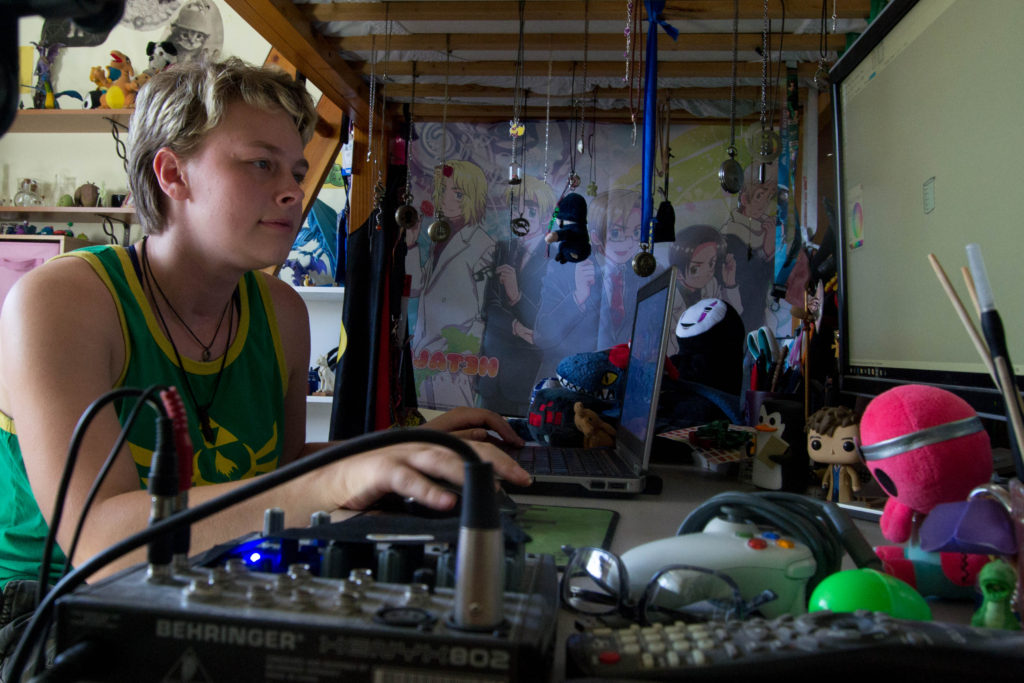
After hours of work, the birth of a video game comes to reality for 18-year-old Leilani Toone. Face etched in deep concentration and buried in drawings, moving objects appearing on two computer screens, a short-haired blonde head bobs up from a desk smiling at her partner in crime, her dad.
The game started for Toone, a student at Pierce College, as a high school project from her childhood drawings. Since then, she has continued to develop it.
The name of the game is Very Bunny, which is a play on words for very funny, and is now available on computers and tablets.
“I was given an SDK [ Software Development Kit] called Unity,” Leilani Toone’s father, Rob Toone, says.
He was given this game engine by Mass Media, the video game company he works for.
Rob Toone used his new SDK to create various games that were never completed, however, he continues to learn Unity with Very Bunny, alongside Leilani Toone.
Unity is a game engine that is used for 2D and 3D games such as Temple Run, Kerbal Space Program and other titles. This engine can be used on computers and mobile devices.
Leilani Toone says that the original concept of the game was based on Harvest Moon, a basic farm simulator role-playing game.
However, the game changed as ideas were shared among the two creators and the storyline became more cohesive. Upon starting the work on the game, both Toones knew they had to master and accomplish techniques they had not tried before.
“When you’re writing a game, you become a person wearing many hats,” Rob Toone says.
Rob and his daughter work together on the animations, writing, art and designs for the game. They poured their time, sweat, and joy into their game, but have never kept track of the hours they’ve spent because of their passion and dedication for developing.
The game will feature voice actors. The dialogues currently have voices and sound effects which are place holders, but may change over time. Rob Toone has also paid for some of the music, but he does want an original musical score for the game.
“I think probably the best quality thing in the whole game is going to be the voice acting because we know the professionals for that,” Rob Toone says.
They have worked on this game for a year and a half and are hoping to finish within a year.
Hank Murphy is the instructor of the app development class at Pierce College and has had some of his students make successful games.
“The best time to have a game appear is about the days of Dec. 10 and 17,” says Murphy.
These are popular days to release a game on the App Store because people receive new phones during the holiday season. The father-daughter team have a mind to make Very Bunny available on mobile platforms.
Murphy says that to make a game successful you need nerds, who are the programmers, the ponytails, who are the artistic people, and the suits who advertise the game.
“You need nerds, ponytails and suits,” Murphy says. “What I’m really hoping for is a big enough success that we make money.”
Rob Toone says he wants to use the money from the residual funds to pay all those who contributed to the game. He could also use the money to pay for Leilani’s college tuition in the future.
As developers, they have the flexibility and freedom to add more content. Should the game be a big success, they will start planning a sequel.
“It’s built in a way that we could add more mini-games, or add more storylines, or characters and not just bug fixes,” Rob says.



